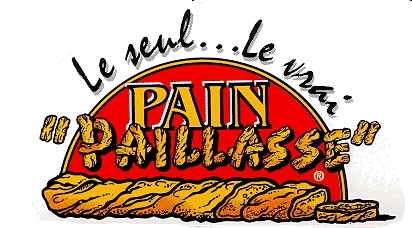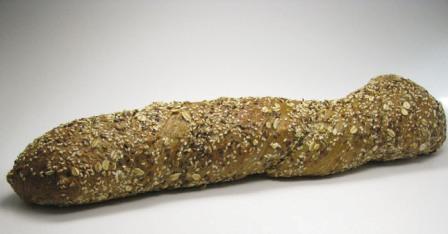Every time I spend five, six weeks with my family in Switzerland in summer, this is the bread I am looking forward to eating the most.

It is originally from Geneva (the French-speaking part of Switzerland) and its inventor is Aimé Pouly, the author of the book “Le pain” (available, but out of stock right now at Amazon, only in French, as far as I know).



He is one of the originators of the “Slow Baking” movement, where bread dough is made completely without the too commonly used industrial flour mixtures that speed up the fermentation. Most bakeries have everything but time, it has to be fast and cheap, and the lacking taste is being helped with additives – a very common approach nowadays, as the well-known German baker Süpke (referred to recently by Hans Joakim) explains in this very interesting article about preferments (in German though). He says, that until he discovered the Slow Baking movement, the only preferment he’d use in his bakery was sourdough. All other dough was made with the use of “little helpers” or convenience additives, as most bakeries do. Now, he says, he doesn’t sell a single bread with yeast that has not gone through some type of prefermentation, and the change was everything but easy, he adds. The entire rhythm of the bakery changed completely, but the resulting breads were absolutely worth it.
Aimé Pouly believes in the old approach of a very long fermentation (about 24 hours it seems) and all breads are hand-formed and therefore no two of them are the same. This is the first fresh bread recipe worldwide that got patented, in 1995. Since then, every bakery that wants to sell this bread needs to get the license from Pouly, and apparently only good, quality bakers are able to get it. Then an advisor comes into the bakery to teach the bakers. MANY bakeries in Switzerland now sell the Pain Paillasse, and in the meantime also over 50 bakeries in Germany, and many places in France, Spain, Austria, Italy, and probably more, but the flour will always get delivered to all of them from Switzerland, as part of the recipe. A true success story of slowness, as it is sometimes referred to.
It originally came in three types: white, dark, and rustique (with seeds), but now also with olives, or chocolate, as a provençal version, and more.

The crust is strong, and the crumb is very open, soft, sweet (there is, however, no sweetness added, it’s just the long fermentation) and very moist.

The taste is just wonderful! My favorite one is the rustic one with the seeds.

Since the recipe is a secret, I have recently tried to recreate a version of it. I saw a recipe for Alpine Baguettes in the blog Beginning With Bread. It is from Daniel Leader’s book “Local Breads” and he got it from Clemens Walch in the Austrian Alps. Since I liked the outcome so much, I have now purchased the book and intend to try many more recipes from it.
We really loved this bread! I have made it twice now, the first time with a whole-wheat starter and the second time completely according to the recipe, with a rye starter (that I have changed from my AP starter over the course of three or four feedings). I could not, however, detect a really different flavor or behavior of the dough, thus in the future I will just take my WW starter. If you like breads studded with seeds (it contains a soaker of sunflower, pumpkin, flax and sesame seeds, as well as rolled oats), then give this a try!
This was my outcome:

The Paillasse rustique has most of its seeds on the outside (it specifies this on the paper sleeve in which it is being sold), the inside just has a few and is otherwise mostly like the dark Paillasse. The Alpine Baguettes are full of seeds inside, but since the hydration is quite high, it's not easy turning the final loafs in a mixture of seeds and grains to coat them.